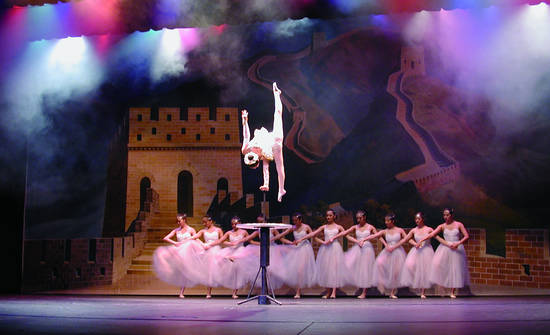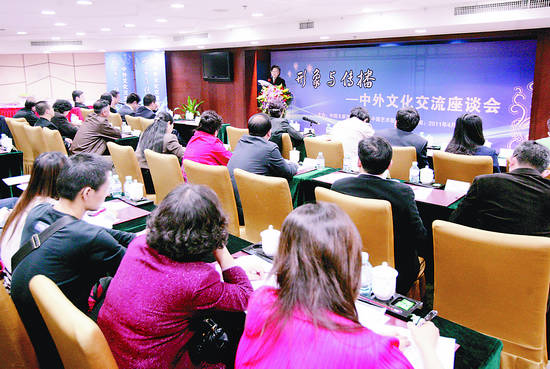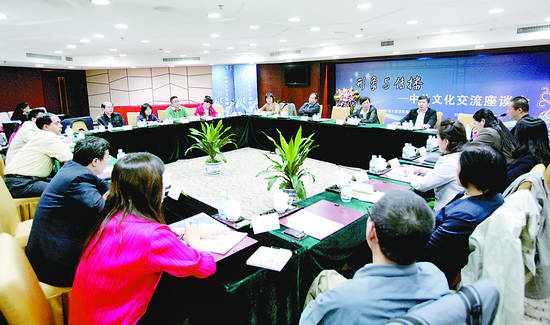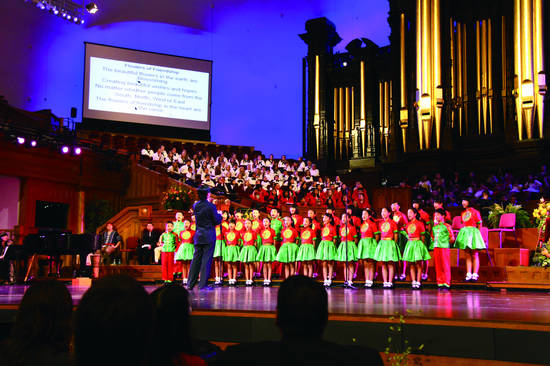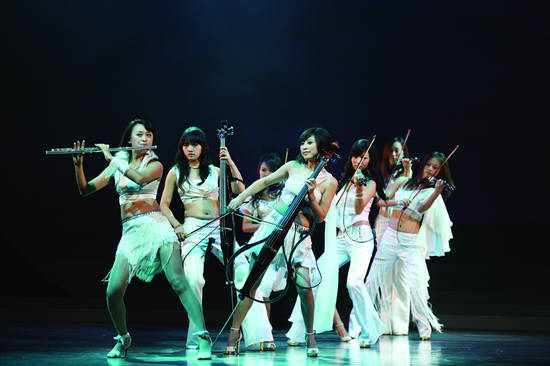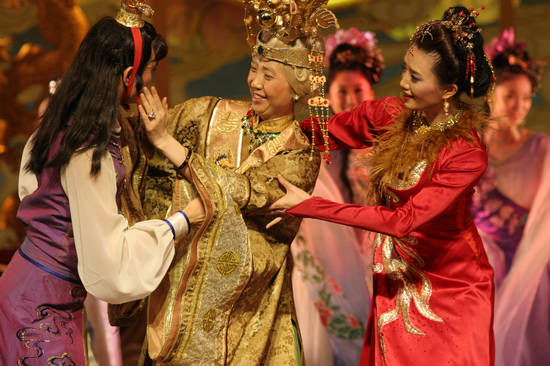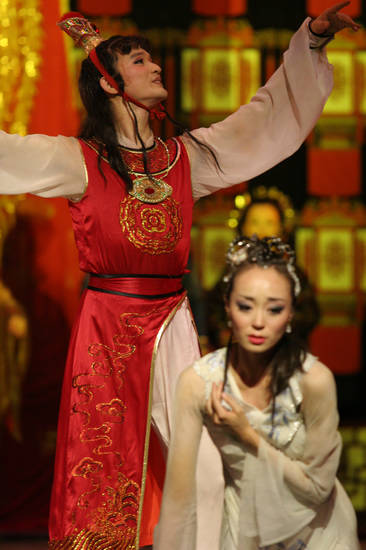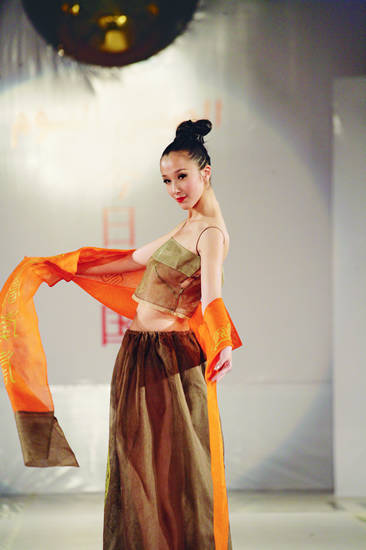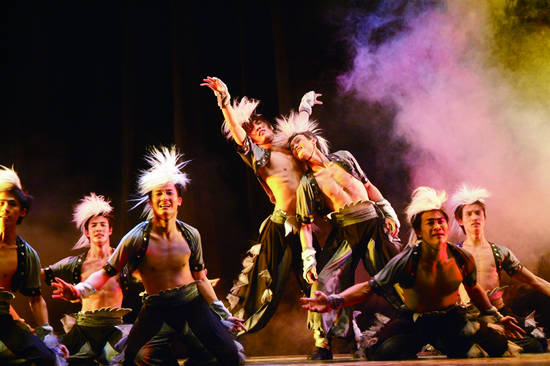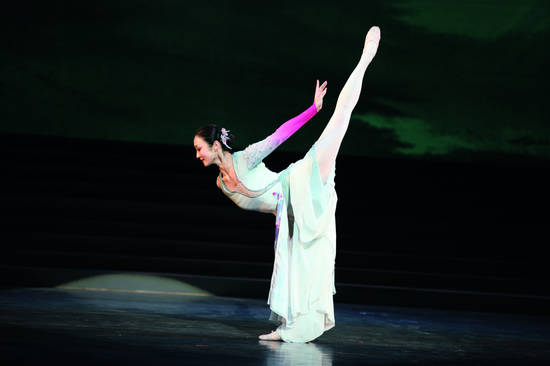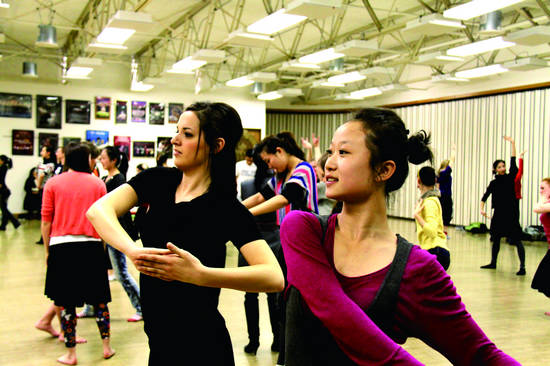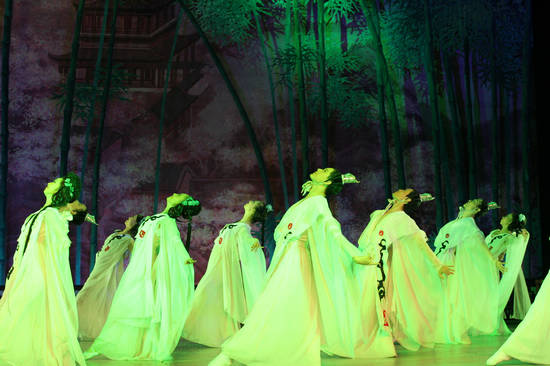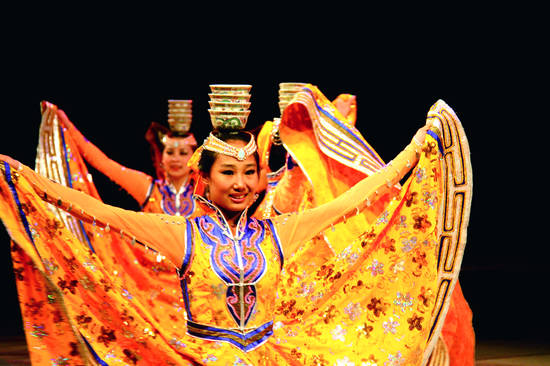Chinese Culture: Oriental Charm at Hand
——Forum on Cultural Exchanges between China and Foreign Countries
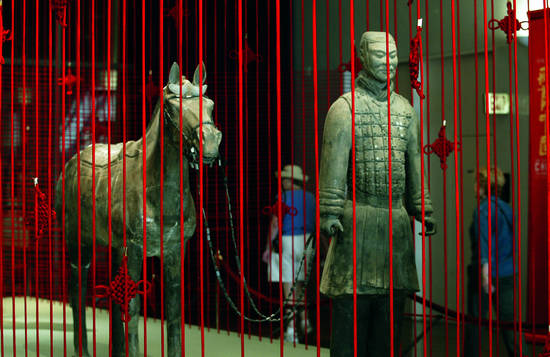
On April 26, Image and Spread: Forum on Cultural Exchanges between China and Foreign Countries, jointly sponsored by International Liaison Department of CFLAC and China Art Gazette, was held in Beijing. Feng Yuan, vice president of CFLAC delivered a speech at the opening ceremony. Scholars and experts such as Huang Huilin, Zhang Yiwu, Song Xiaoxia, Ren Xiaomeng, three leaders of International Liaison Department ie, Huang Wenjuan, Fan Bin and Dong Zhanshun, Xiang Yunju and Zhu Hongzi, president and vice president of China Art Gazette as well as leaders of national art associations such as Feng Shuangbai, Wang Feng, Luo Bin, Liu Xiuwen, Tao Qin, Zou Yuhua and Pan Wenhai attended the forum with over 40 people present.
Focusing on such topics as “Formation and Showcase of National Cultural Images of China in External Cultural Exchange”, “Spreading System and Approach in China’s External Cultural Exchange”, “Innovation on Interpretation and Layout Language in Cultural Exchange”, “Brand Activity Establishment of Cultural Exchange” and “How to Introduce Chinese Calligraphy, Traditional Painting, Local Operas, Quyi and Folk Arts to Foreign Audiences in an Easier Way to Understand”, experts present at this forum conducted their theme address and discussion. It is commonly acknowledged among all the experts that due to difference in cultural background and cultural mentality in the process of cultural exchange between China and other countries, and organizer’s lack of research on the receivers’ knowledge of Chinese culture, some approaches of cultural exchange with foreign countries need to be improved. The issues such as how to enrich form and content of cultural exchange in accordance with the principle, how to expand approach and channels of Chinese culture Going-out, and how to enable the outside world to know and understand China in a more profound and all-round way in the prerequisite of equal dialogue of varied cultures have become key research projects for China.
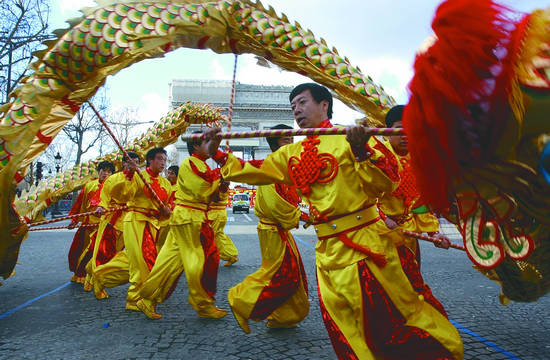
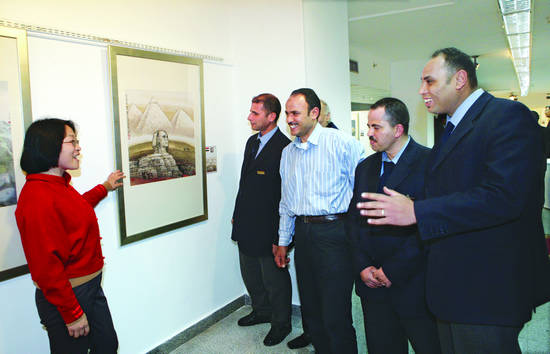
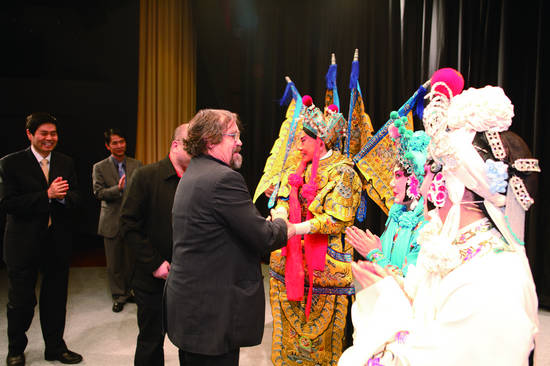
“In recent years, we have made all efforts to enhance cultural publicity and communication and some improvement has been fulfilled in system, contents, methods and effects. Many foreigners have gradually grasped the national image of contemporary China through key international comprehensive events such as Beijing Olympiad and Shanghai Expo, which betters friendship between Chinese people and the outside world. However, we still find difference in cultural background and cultural mentality in the process of cultural exchange between China and other countries, and we need to make our exchange channel better in the future. For example, how to introduce Chinese calligraphy, traditional painting, local operas, Quyi and folk arts to foreign audiences in an easier way to understand has become a new question that demands our thinking and solution.” Feng Yuan, vice president of CFLAC remarked at the Image and Spread: Forum on Cultural Exchange between China and Foreign Countries on April 26, which was jointly held by International Liaison Department of CFLAC and China Art Gazette. Through above words, we must consider how to enrich form and content of cultural exchange in accordance with the principle, how to expand approach and channels of Chinese culture Going-out, how to enable the outside world to know and understand China in a more profound and all-round way in the prerequisite of equal dialogue of varied cultures, and how to strengthen the affinity, attraction, knowledge and influence of Chinese culture through international spread.
In order to bring the world to understand Chinese culture, several key points must be made: China Location, Global Vision and Humanistic Aspiration. “With brushes or clay, artists describe and mould a vivid China, which will naturally arouse foreigners’ curiosity about China. When we held exhibitions abroad, some audiences would told us that after this exhibition they would like to have a look at Beijing.” Tao Qin, deputy secretary-general of China Artists Association, said. In her opinion, relevance, familiarity and efficiency must be underlined in cultural exchange, and then the possibility of appreciation will lead to the willingness for understanding of actual audience.
As to export in cultural exchange, governmental events are more than non-governmental projects, and more events tend to lead to financial loss rather than profit. The unfavorable balance in cultural trade is adverse with the proportion of 10:1 and especially 100:1 in terms of European and American countries. In the international cultural market, Japan and Korea possess 13% while China and other Asian countries account for 6%. In the 30 years since reform and opening up, China has been absorbing foreign capitals but many private cultural companies have no overseas objective at all. “A friend of mine once held an exhibition in Japan. He hired a Chinese for plotting and resulted in 100 audiences in a week. Last year, our company also held a painting exhibition in Japan. Our Japanese plotter sent invitations to more than 600 experts and we achieved a satisfactory result. Another example is Wu Guanzhong’s exhibition in Hong Kong in 1987. The curator is an American who later resorted to American Express as the main sponsor. American Express put forward only one condition: only those cardholders of American Express were entitled to view the exhibition. After this advertising was issued, hundreds of thousands of people queued for attending the opening ceremony, and many reporters were attracted as well. That exhibition was such a success that all the 105 pieces of works were sold out.” Wang Guoxian, Longtu Cultural Science Co., Ltd in Hong Kong introduced. His vivid examples illustrate that it is necessary to hire professionals in the target country to conduct publicity in the light of local conditions.
Along with China’s development, the former international structure has been undergoing a significant change, and China is standing in the international vision with a brand new appearance. Maybe such a historic change is a bit too quick for China and the world. Zheng Xiaohua, vice president of Art Academy of China Renmin University, commented, “I hold that we need to reconsider some issues. Firstly, the domestic approach should not be rigidly extended to international field, and image formation and external exchange must be reviewed from international perspective. In culture exchange in the past, we were prone to lay emphasis on excellent Chinese traditional culture alone, which still needs careful reexamination. Tradition is only part of Chinese culture, and it is more important for us to demonstrate the contemporary outlook of Chinese culture and establish the national image in a comprehensive way.”
